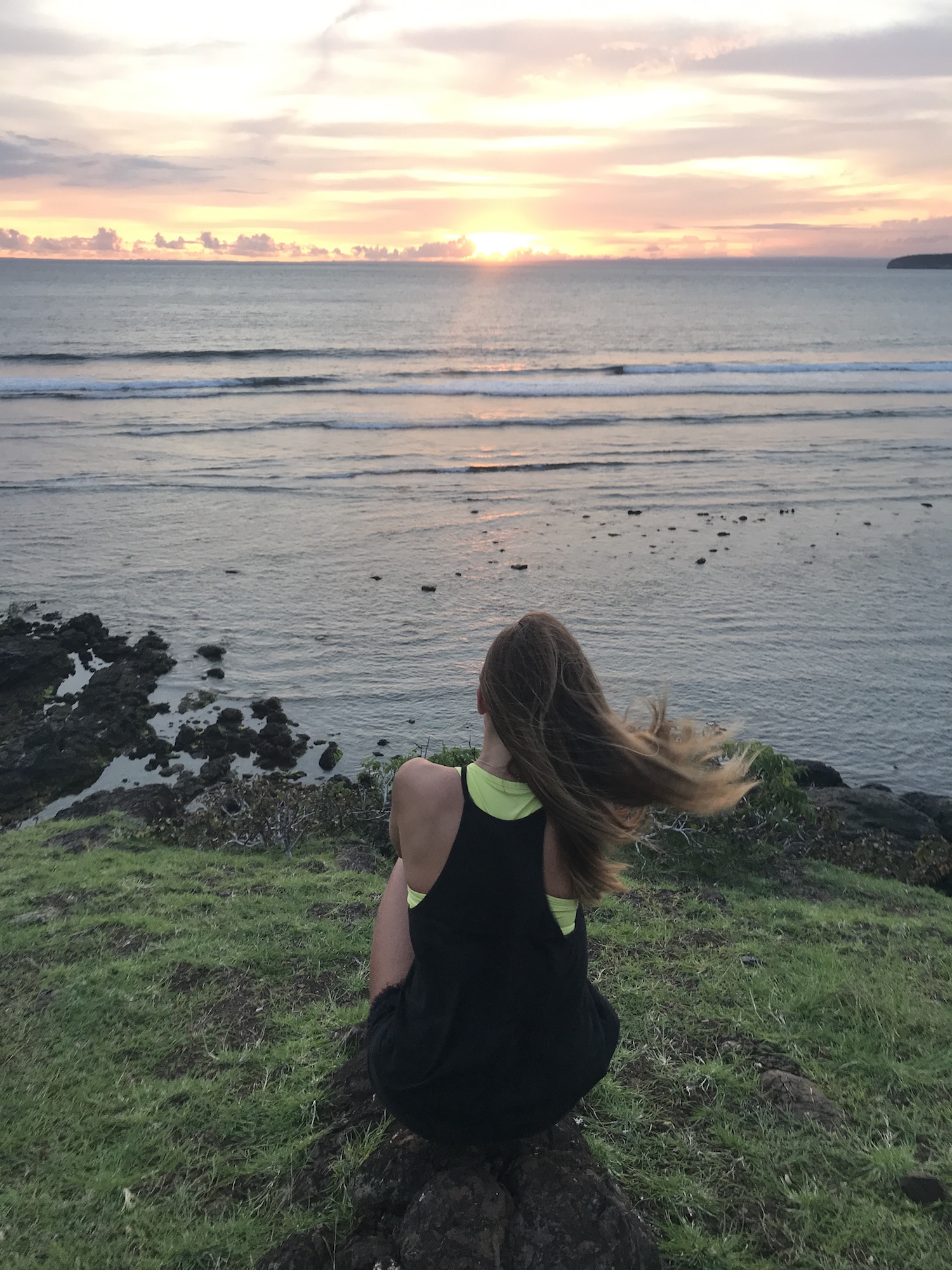Dirty Hippies, West Sumbawa
The ultimate guide for a perfect surf trip
For ten years of living in Indonesia, I’ve been here about ten times and could come back again and again. Western Sumbawa—specifically, the area around the village of Kertasari—is my favorite spot for surfing and hitting the reset button. Empty lineups, crystal-clear turquoise ocean, white sand beaches framed by emerald hills... Your body works hard out here, sure, but your mind? Totally at peace.
My personal story
My love story with Dirty Hippies started back in 2013, when six friends and I came here on a wild adventure. Some of us had already been to Sumbawa, but only to the more famous spots like Yoyo’s and Tropical. This time, though, we decided to explore the coast closer to the port—the strait between Lombok and Sumbawa. Back then, there wasn’t a single hotel here. Heck, there wasn’t even a proper road. The plan was simple: drive along the bays, find a spot that looks promising, and pitch our tents on the beach.
And that’s exactly what we did. It was an unforgettable experience — staying just by the ocean, cooking over a campfire, waking up with the sunrise, and surfing two to three times a day. I remember on the fourth day, when a massive tropical downpour rolled in, I dashed outside with shampoo to wash my hair! A day later, after sunset, I went to rinse out a cup in the ocean and noticed these glowing dots in the water. I grabbed my mask and fins and dove in. Swimming at night with bioluminescent plankton? Absolutely unreal—I hope everyone gets to try it once in their life.
Of course, a lot has changed since then: there’s now a big resort (more on that later) and a proper road. But the most important things haven’t changed—the feeling like you’ve stepped into another reality where there’s no rush and zero worries.
Of course, a lot has changed since then: there’s now a big resort (more on that later) and a proper road. But the most important things haven’t changed—the feeling like you’ve stepped into another reality where there’s no rush and zero worries.
Surfing in Western Sumbawa
When to Go
The surf season in Sumbawa runs all year long. I’ve been here in the rainy season, the dry season and anything in between. I’ve never experienced full days of rain—even in the height of the rainy season, showers are short and not daily. Maybe it’s because the big volcano is far off, and the clouds just pass by. From November to March, the Sumbawa hills are a lush emerald green, while the dry season turns the landscape into shades of yellow and brown.
Wind conditions are pretty steady too. The bays are well-sheltered in the strait between Lombok and Sumbawa, so it’s often possible to surf all day. If there’s wind, it usually picks up between 12 and 3 PM, and even then, it’s mild.
Wind conditions are pretty steady too. The bays are well-sheltered in the strait between Lombok and Sumbawa, so it’s often possible to surf all day. If there’s wind, it usually picks up between 12 and 3 PM, and even then, it’s mild.

Don't forget about the suscreen!
One thing to keep in mind, though: the tide matters way more than the season. For the surf spots to work well and stay safe, the tide needs to be high—over 1.5 meters. This happens twice a month during the new moon and full moon phases. I usually check the Bali tide chart and pick dates where high tide is at dawn on the first day of the trip (in tropics, where the length of a day is nearly 12 hours, it means you’ll get another tide at sunset, so you can surf twice a day). Each day, the tide shifts forward by about an hour. Eventually, both surf sessions end up in the morning—one on the rising tide, then breakfast, and the other on the falling tide. If you’ve got the energy, you can surf for up to four hours straight.

As for swell, the area has seven spots of varying difficulty, so surfers of all levels—from beginners to pros—will find something that suits them, no matter the forecast.
Surf Spots
Like I said, there are seven spots near Kertasari. I usually surf at two of them, with the rest as backups. Here is the surf map.

The main spot in the area is Dirty Hippies, a reef break with a left-hand wave. It’s a fast and steep wave with a thick lip, and when the swell’s pumping, the takeoff can be a solid barrel section. On smaller or medium swells, it’s great for both shortboards and longboards. If you’re on a longboard, it’s better to take off from the shoulder and aim for an angled takeoff—paddle along the wave rather than straight toward the shore—or you risk nosediving. The reef is shallow, with a few big boulders in the impact zone, so if you wipe out, don’t kick around too much under the water to avoid cuts. But the channel is well-defined, so paddling out is easy.
When to surf: Shortboards work from 500 kJ and up—as much as you’re brave enough. Longboards are great up to 700–800 kJ (less experienced surfers should stick to smaller swells—be realistic about your skill level).
In the middle of the same bay is the backup spot, Middle Reef, which starts working when the swell hits 800 kJ. It’s a right-hand reef break with a steep takeoff, but the wave quickly flattens and slightly changes direction. Long waves are rare here. I’m not a big fan of this spot because there’s not enough face for smooth maneuvers on a shortboard, and longboards just don’t have a steady section to work with. But for surfers with less experience, it’s a good place to practice steep takeoffs and just enjoy the ride along the wave.

Couldn't find fresh pictures because haven't surf this peak since 2014
When to surf: When Dirty Hippies becomes “a bit too much,” Middle Reef kicks in around 800 kJ and up.
At the far end of the bay, there’s another spot: Northern Right, a right-hand point. It works rarely with very specific tide and swell direction, so the only advice I can give is to go there if you see the wave is breaking and you’re up for an adventure.
Limestone and Mangrove are my absolute favorites in the area, located in a different bay in just a few minutes drive. These are reef breaks with left-hand waves that offer beautiful, consistent waves — perfect for both shortboards and longboards. The only challenge is to paddle out and then back in. The bay is lined with mangroves, so you can’t cut through them; you have to paddle from the edge. The right side is slightly closer, but the entry there is rocky and tricky. The left side offers a longer paddle but easier access. It takes about 10–15 minutes to get from shore to the lineup, so make sure to save enough energy for the paddle back after your session and if you surf at sunset time, keep in mind it might take longer because you are tired.
Limestone and Mangrove are my absolute favorites in the area, located in a different bay in just a few minutes drive. These are reef breaks with left-hand waves that offer beautiful, consistent waves — perfect for both shortboards and longboards. The only challenge is to paddle out and then back in. The bay is lined with mangroves, so you can’t cut through them; you have to paddle from the edge. The right side is slightly closer, but the entry there is rocky and tricky. The left side offers a longer paddle but easier access. It takes about 10–15 minutes to get from shore to the lineup, so make sure to save enough energy for the paddle back after your session and if you surf at sunset time, keep in mind it might take longer because you are tired.

The water entry for Limestone might look surfable, but it’s not—the seabed is covered with seaweed farms, their “beds” marked by metal pipes sticking out of the water.
If you’re looking at the waves from the shore, the Limestone peak is on the left—it’s bigger, steeper, and can even barrel. The Mangrove peak is on the right—it’s also steep but a bit gentler, with a channel at the end that makes paddling back out much easier. Again, the less experience you have, the farther off the shoulder you can be catching waves. To line yourself up on the water, use the hills opposite the bay for reference: the peak is roughly aligned with a cluster of trees that looks like a giant octopus. I won’t even try to explain—you’ll see it, and you’ll know.
When to Surf: These spots start working at around 800 kJ but are at their absolute best between 1000–1200 kJ. Because the waves break so far from shore, they can seem too small at first glance. Trust me, it’s just an illusion—if you spot foam in the middle of the bay, paddle out, because it’s on!
Don’t worry about encountering a massive swell during your trip. In such cases, there’s a “backup” spot at the far end of Limestone Bay — Dermaga (The Pier). This is a right-hand point break with a soft, long wave that can take you right into the mangrove forest. (Though I don’t recommend it—the mangroves have sharp, spiky roots!)
Lastly, there’s a spot I’ve only seen from afar — Powerstation. It’s named after the power plant it sits across from. This is a barreling beach break meant for shortboarders and tube enthusiasts, especially if Dirty Hippies isn’t pumping. It’s the only spot in the area that works on low tide.
Where to Stay: Whales & Waves
As I mentioned earlier, near Dirty Hippies, there’s one resort where I always stay—Whales & Waves. It was built and is run by my good friend Denis. The resort is huge, with a palm grove right by a pristine white-sand beach. There’s literally no one around. The nearest village, Kertasari, is just five minutes away, but it’s tiny. The closest larger town with shops, pharmacies, and ATMs is at least a 30-minute drive.
Whales & Waves offers a variety of accommodation options: standalone bungalows with two bedrooms, living rooms, and spacious bathrooms, cozy double rooms with private bathrooms, small air-conditioned rooms with shared showers, and simple bamboo huts. I usually go for the bamboo huts—not just because they’re budget-friendly, but because I genuinely love them. At night, you can hear the swell through the walls. Each hut has a mosquito net, and you won’t even need air conditioning because the natural ventilation keeps things cool. In the dry season, nights can actually get chilly if you’re sleeping solo.
On the last trip, though, I stayed in one of the two-bedroom houses. They’re super cozy, with firm mattresses and a mini-fridge — a perfect setup for two couples or two friends who appreciate privacy!
On the last trip, though, I stayed in one of the two-bedroom houses. They’re super cozy, with firm mattresses and a mini-fridge — a perfect setup for two couples or two friends who appreciate privacy!
The restaurant is a local landmark in itself. It has an 11-meter-high bamboo structure supporting a roof that mimics the shape of a nearby island. It’s stunning! Sure, the prices are resort-level, but the food is fantastic. The seafood pasta and pizza are delicious, and they serve a variety of breakfast options—from eggs and oatmeal to incredible scrambled tofu and smoothie bowls (just as good as the ones in Canggu!). Daily food will cost around 300k IDR a day, or 400k if you throw in desserts and drinks.
For those who are just chilling, there’s decent Wi-Fi for such a remote place and plenty of hammocks strung up under the palm trees. For the more active types, there’s a workout area with bars, a volleyball court, a skate ramp (built by a Hawaiian pro a few years back), a yoga platform, and a slackline. Denis loves frisbee, so if he’s around, you can challenge him to a game! They also rent out snorkeling gear, kayaks, and even jet skis. But let’s be real—most surfers here just eat, sleep, and surf.
Getting There
Whales & Waves is located between the Dirty Hippies and Limestone surf spots, so having your own transportation is ideal. The journey from Bali by car takes about 12 hours. Here’s the breakdown: 1.5–2 hours to Padang Bai port on Bali, 4–5 hours on the ferry to Lombok, 2–4 hours to cross Lombok, depending on traffic, 1.5 hours on the ferry from Lombok to Sumbawa and scenic 40 minutes drive along the empty coastal road to the resort.
If you leave Bali around sunset, you’ll cross Lombok at night, which saves time—about two hours. Bring a hammock for the ferry; you can tie it to the rails and nap for four hours. No hammock? A yoga mat on the floor works too. They also offer ferry cabins, but trust me, skip them—those mattresses are crawling with bedbugs.
If you leave Bali around sunset, you’ll cross Lombok at night, which saves time—about two hours. Bring a hammock for the ferry; you can tie it to the rails and nap for four hours. No hammock? A yoga mat on the floor works too. They also offer ferry cabins, but trust me, skip them—those mattresses are crawling with bedbugs.
At the time of writing this article (2021) Indonesia was rolling out a new payment system for ferries. While you can still pay cash for the Lombok-Sumbawa route, the Bali-Lombok route now requires a special ferry card issued by BNI bank. You can get one at the port, top it up via BNI ATMs, online banking, or Indomaret stores, and don’t forget to “update” the balance at the port. The process is clunky, but the staff will help you figure it out.
(Note: You’ll need the original car documents for the ferry. Some rental companies charge extra for inter-island trips—don’t try to trick them! Most cars have GPS trackers.)
(Note: You’ll need the original car documents for the ferry. Some rental companies charge extra for inter-island trips—don’t try to trick them! Most cars have GPS trackers.)

Another option is flying to Sumbawa with a layover on Lombok. The transfer to Whales & Waves takes about two hours, and you can rent a scooter at the resort for getting around. This is a good choice if someone in your group is up for the road trip, while others prefer to fly (e.g., for those prone to seasickness or traveling with kids).
Things to Do
Sumbawa’s chill vibe makes you want to do absolutely nothing, but the island’s natural beauty is worth exploring if you’re up for it.
Agal Waterfall is an absolute must for hiking enthusiasts. It’s the most breathtaking waterfall I’ve seen in Indonesia—80 meters tall, with cascading pools where you can swim. But it’s a two-hour trek through the jungle, and you’ll definitely need a guide from the local village, or you’ll get lost.
For something easier, there’s another waterfall accessible by car. It’s a lovely spot with multiple natural pools for swimming and cliffs to jump from.
Agal Waterfall is an absolute must for hiking enthusiasts. It’s the most breathtaking waterfall I’ve seen in Indonesia—80 meters tall, with cascading pools where you can swim. But it’s a two-hour trek through the jungle, and you’ll definitely need a guide from the local village, or you’ll get lost.
For something easier, there’s another waterfall accessible by car. It’s a lovely spot with multiple natural pools for swimming and cliffs to jump from.
One day of your trip, you might want to check out the Tropical surf spot. Surf in the morning, then head to the lighthouse at sunset. The trail winds through bushes but is manageable, with ribbons marking the way.
Prices
(prices might have changed since 2021, please check online current rates)
Since high tides are essential for surfing here, a week-long trip is perfect. Here’s the estimated cost breakdown:
Accommodation:
- Bamboo hut: 250,000 IDR/day
- Standard room: $50/day
- Deluxe room: $60/day
- Villa: $220/day
Food: Budget around 300,000 IDR/day for meals, plus a little extra for fruits and sweets from local shops.
Transport:
- Ferries: 3,000,000 IDR
- Gas: 500,000 IDR
- Car rental: 1,500,000 IDR
Accommodation:
- Bamboo hut: 250,000 IDR/day
- Standard room: $50/day
- Deluxe room: $60/day
- Villa: $220/day
Food: Budget around 300,000 IDR/day for meals, plus a little extra for fruits and sweets from local shops.
Transport:
- Ferries: 3,000,000 IDR
- Gas: 500,000 IDR
- Car rental: 1,500,000 IDR
Total: For the most budget-friendly option (6 nights in a bamboo hut, 5 people sharing a car), you’re looking at about 4,500,000 IDR per person for a week in a surfer's paradise.

Worth to read

